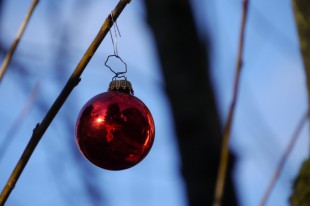
Cherry Tree
December 24 - Merry Christmas!
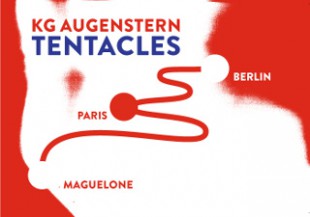
Sound Art
December 18 - Gruenrekorder is a German label for field recording, soundscapes and sound art. One of their recent releases is a lavishly designed booklet and CD with the title TENTACLES by Christiane Prehn and Wolfgang Meyer alias KG Augenstern: "The artist group Augenstern have lived and worked on the ship Anuschka for many years. In July 2014 the MS Anuschka left Berlin in the direction of Paris before reaching their final destination in the south of France in November 2014. On the way, the crew examined numerous bridges, spanning rivers and canals. Using tentacles installed on board to scratch the bridges, the ship turned into a sensitive, perceiving and sounding laboratory interacting with the territory. Each of the bridges passed has its personal soundprofile, created by its shape, its practical use and its way of construction."
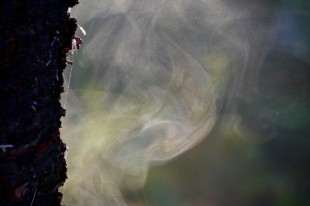
Cherry Tree
December 10 - Morning sun / moist with dew / smoking tree.
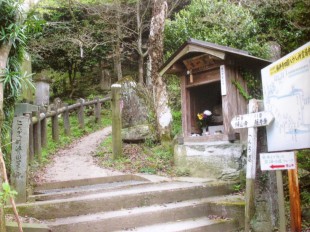
Reading
December 5 - The Way of the 88 Temples - Journeys on the Shikoku Pilgrimage by Robert C. Sibley: "After Tanak-san’s lesson I began to see things just a bit differently. Whatever I looked at with conscious intention - trees and temples, sea and sky - stood out in sharp distinction from the surrounding background. Ordinary things - a child’s tricycle in a driveway, three oranges in a roadside shrine, the wind rippling on the water in a rice field, green spring wheat - shimmered with an aura of significance. But it wasn’t only my sense of sight that became more acute. In sound, smell, and texture - the crunch of gravel, the whiff of a barnyard, the smoothness of a bamboo stalk - my senses buzzed like wires humming with electricity. I felt as though I’d reached a kind of psychic plateau that left me feeling both deeply contented and, at the same time, strangely excited. Everything was clear and intense yet also peaceful and qiet."

Exhibition
October 17 - At Museum Kunstpalast in Düsseldorf: The Photographer Nic Tenwiggenhorn “belongs to a group of photographers from North-Rhine Westphalia that became known since the 1960s...From the early 70s, he focused on work for the art scene, shooting hundreds of pictures in artists’ studios, at openings and on other occasions. This largely unknown body of work was made parallel to his commissioned photography, in which he documented works of art for catalogues and other publications, employing the highest technical standards."”(exhibition brochure)
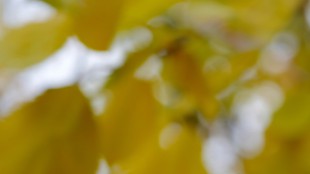
Cherry Tree
November 15 - "The golden wind." (Answer to a koan).
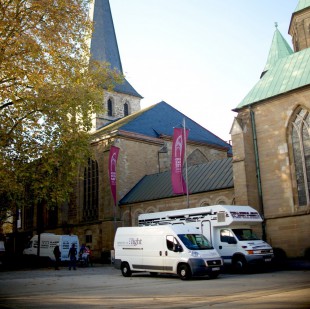
Teaching
November 13 - Using our recently upgraded multi camera van the students of my advanced ‘Music and Video-Production’ class at the Institute For Music And Media record a concert of choir music at the Cathedral in Essen. The Cathedral‘s Girls Choir and the Sinfonische Collegium Essen under the artistic direction of Raimund Wippermann perform Felix Mendelssohn Hör mein Bitten, Gustav Mahler Rückert-Lieder and Gabriel Fauré Requiem Op. 48.
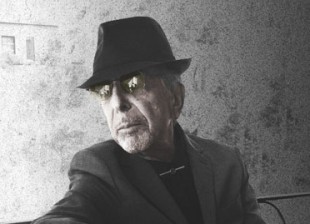
Orbituary
November 12 - First news in the morning: Canadian poet and singer/songwriter Leonhard Cohen died - at the age of 82. On his last album, which was released only a few weeks ago, he sings: “Hineni Hineni - I am ready, my Lord!”.
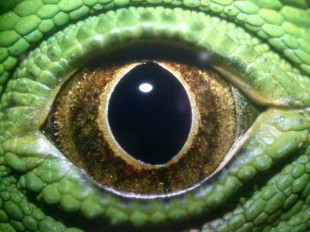
Exhibition
November 10 - Wonders of Nature is the title of a truly wonderful exhibition at Gasometer in Oberhausen “about the creative forces of animals and plants. Through their publications in journals like ‘Geo’ and ‘National Geographics’ and for BBC TV, the photographers and film makers who created the pictures for the exhibition have helped us to once more develop a sense of awe for nature’s overwhelming richness.” Among the many thoughtful quotes that link the flood of images is one by futurologist Robert Jungk (from the 70s): “Only when we understand the ingenuity of biological systems will we learn to be more fascinated by the life of plants and animals, which has formed over the course a billion years, and admire these systems more than the innovations of human technology.”

Cherry Tree
October 21 - Change of color.
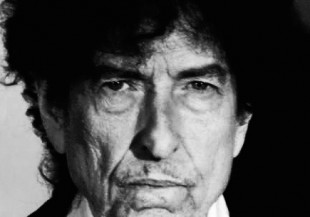
Awards
October 13 - The Nobel Prize in Literature for 2016 is awarded to Bob Dylan “for having created new poetic expressions within the great American song tradition”. Whow! I take a deep bow!
_45360f.jpg.jpg)
Teaching
October 4 - Start of the winter term at the Institute for Music and Media at Robert Schumann University of Music in Duesseldorf.

Reading
September 20 - In Gary Snyder’s The Practice of the Wild, a classic in the genre of nature writing, first published in 1990, I read: “The pathless world of wild nature is a surpassing school and those who have lived through her can be tough and funny teachers. Out here one is in constant engagement with countless plants and animals. To be well educated is to have learned the songs, proverbs, stories, sayings, myths (and technologies) that come with this experiencing of the nonhuman members of the local ecological community. Practice in the field, ‘open country’, is foremost. Walking is the great adventure, the first meditation, a practice of heartiness and soul primary to humankind. Walking is the exact balance of spirit and humility. Out walking, one notices where there is food. And there are firsthand true stories of ‘Your ass is somebody else′s meal’ - a blunt way of saying interdependence, interconnection, ecology, on the level where it counts, also a teaching of mindfulness and preperedness. There is an extraordinary teaching of specific plants and animals and their uses, empirical and impeccable, that never reduces them to objets and commodities.”
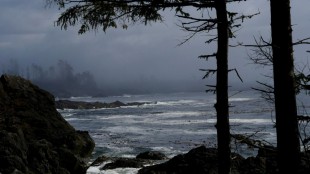
Walking
September 14 to 17 - Hiking along the ten kilometer stretch of Long Beach in the Pacific Rim National Park and along the Wild Pacific Trail between Ucluelet and Tofino on the West Coast of Vancouver Island.

Kayaking
September 12 and 13 - Two day kayak tour with our twenty year old daughter in Desolation Sound, a deep water sound in British Columbia (Canada), famous for its spectacular fjiords, mountains and marine wildlife. The weather could not be better. We camp on a wooden platform at Hare Point in the Desolation Sound Marine Provincial Park, witness a viewy sunset and see countless stars in a silent night. In the early morning we wake up by the heavy breathing and spouting of a huge sea lion, that is hunting in front of our doorstep.
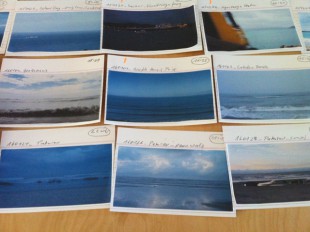
24seascapes
August 15 to 21 - I prepare the editing of 24seascapes, a structural film composed of 24 ocean views. Spoilt for choice I select from hundreds of takes, that I recorded a few months ago in New Zealand. In the final cut each take will be exactly two and a half minutes in duration. The main criteria for the selection is the (synch) sound. Variations on white noise.
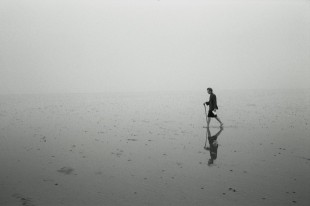
Reading
August 30 - With great pleasure I read The Old Ways: A Journey on Foot, an "exquisitely written" book (published in 2013) by British nature writer Robert Macfarlane: "I have long been fascinated by how people understand themselves using landscape, by the topographies of self we carry within us and by the maps we make with which to navigate these interior terrains. We think in metaphors drawn from place and sometimes those metaphors do not only adorn our thought, but actively produce it. Landscape, to borrow George Eliot’s phrase, can ′enlarge the imagined range for self to move in.′ As I envisage it, landscape projects into us not like a jetty or peninsula, finite and bounded by its volume and reach, but instead as a kind of sunlight, flickeringly unmappable in its plays yet often quickening and illuminating. We are adept, if occasionally embarrassed, at saying what we make of places -- but we are far less good at saying what places make of us. For some time now it has seemed to me that the two questions we should ask of any strong landscape are these: firstly, what do I know when I am in this place that I can know nowhere else? And then, vainly, what does this place know of me that I cannot know of myself?”

Cherry Tree
July 26 - Sweet summer rain.
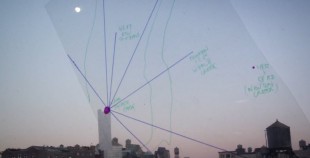
DVD
July 25 - Jonas Hummel, a friend and occasional collaborator, gives me a copy of Everybody’s Cage - A conversation with John Cage, an 80 minute documentary film from 2015 by Sandra Trostel. He served as sound recordist in the production. The film features Francesco Tristano, Bruce Brubaker, Brandt Brauer Frick, the Symphonic Orchestra Muenster - and some of the thoughts of John Cage (like: "Many people think, that if they are able to understand something, that they will be able to experience it, but I don’t think that that is true. I don’t think that understanding something leads to experience. I think, in fact, that it leads only to a certain use of the critical faculties. because...say you understand how to boil an egg. How will that help you in cooking zucchini? I’m not sure. One could make the point more dramatically by saying, ‘How will that help you to ride horseback?’ But that probably goes too far. I think that we must be prepared for experience not by understanding anything, but rather by becoming open-minded.”)
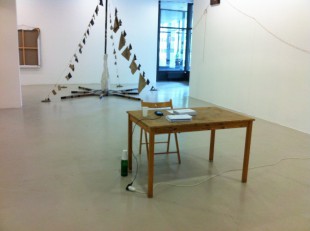
Performance
July 23 - series invisible is an ongoing audio project by Christoph Korn and Lasse-Marc Riek. Since 2004 they record the sound of specific locations. Later on they delete the recordings. This process of finding a location, recording and deleting is then captured textually. The result is an audio event noted and transformed into a script. At Klangraum 2016 over a period of three days all the existing “deletion notes” are read by different readers - and followed by periods of silence corresponding to the duration noted. Sabine and I read and sit in silence during three of the 26 hours. "With surprise we notice that the more we have things the less we actually do have them. ‘To have them’ meaning to know about them, what and how they are – in relation to other things and to us and what they mean in both respects. What is that knowledge we assemble? Is there anything real beside that knowledge? What does knowledge actually mean? To have it? In terms of information, stored on data-carriers, be it carved in stone, printed in books or lasered on hard disc? Or to experience it as the inescapable flow of sounds, clips, features and messages that make up the movie of everyday? Seems that the more uncertain our reasons for being become the more of that stored or flowing data is needed to accompany us – kind of an expanding cushion to keep us from getting hold of ourselves. Can there be a return to things? And to us? I don’t think so, because on what corner should we turn? As artists we do, inevitably, develop, enlarge and refine the use of symbols – therefore we help to blow up that cushion – both as masters and servants of the respective methods applied. What could a responsible measure to implant a self-reflection of such methods consist of? Maybe it can consist of erasure.” (Achim Wollscheid)
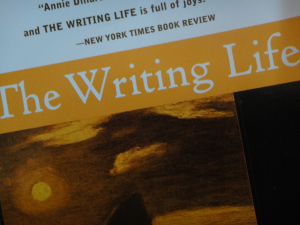
Reading
July 10 - In the “The Writing Life”, a nonfiction book from 1989 by American author Annie Dillard (best known for Pilgrim at Tinker Creek) I read: “There is no shortage of good days. It is good lives that are hard to come by. A life of good days lived in the senses is not enough. The life of sensation is the life of greed; it requires more and more. The life of the spirit requires less and less; time is ample and its passage sweet. Who would call a day spent reading a good day? But a life spent reading -- that is a good life.”
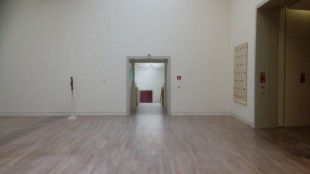
Exhibition
July 5 - Andreas Gursky - not abstract at K20 in Duesseldorf. German photographer Andreas Gursky, mostly known for his large format landscape photographs, presents his recent works, in which he "explores the abstract potential of the photographic medium. From early in his career, abstraction has served Gursky as a resource for compositional freedom, and in his view, establishes the closest possible proximity between painting and photography. Nevertheless, explains the artist, photography is never completely abstract: it is always bound up with the object. Accompanying the photographic works is a minimalist sound installation by Canadian producer and DJ Richie Hawtin." (K20).
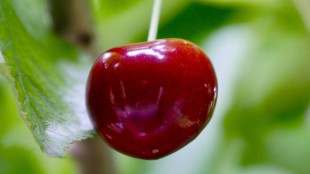
Cherry Tree
July 4 - Spot-on!
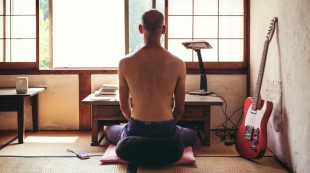
Movies
July 1 - Walhalla Kino in Wiesbaden: Zen for Nothing by German filmmaker Werner Penzel. Music by Fred Frith. A documentary film about the visit of a young Swiss woman to Antai-ji, a Japanes Zen monastery, that is based on the philosophy of the late Zen Master Kodo Sawaki. “Is it not strange that not a single person seriously considers his own life. The only thing that people are concerned with is what is ‘useful’. And where did that take us? Nowhere.” (Kodo Sawaki, former head of Antai-ji monastery)

Snatch
June 27 - The spider’s web in morning light /
from the neighbor’s house /
the sound of a flushing toilet
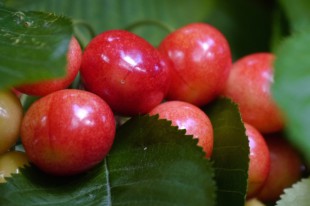
Cherry Tree
June 19 - I′ll wait!
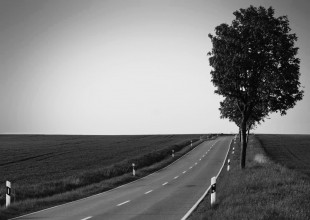
Theater
May 24 -International May Festival Wiesbaden. The Innocent, Me and the Unknown Woman by the Side of the Road - a new play by Peter Handke, directed by Claus Peymann and performed by the ensemble of the Burgtheater in Vienna and Christopher Nell from Ensemble Berlin. "The location: a country road, a ‘common country road’? The protagonist(s): ‘I’, seated by the side of this country road, alternating between narrator and dramatic player. ‘I’ experiences the road as ‘the last free road in this world, the last un-nationalised, un-socialised, uncharted, un-geologised, un-botanised, un-Googled, non-public and non-private thoroughfare on earth’. This world, this last free space, must be defended at all costs against the ‘country road occupiers’, who innocently go alone or with others – with many – along this road; they are called The Innocent’. And there is the ‘Unknown Woman’, the beautiful, desirable and ‘long-awaited’ one on the country road.(Program)
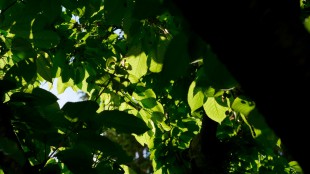
Cherry Tree
May 20 - Shelter and shade.
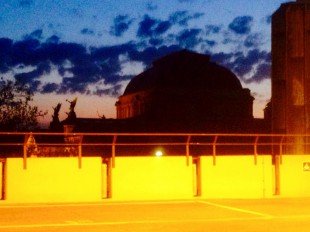
Theatre
May 7 - International May Festival Wiesbaden: AGOTHA? The Illiterate (Yesterday / Somewhere), by German composer Helmut Oehring with Dagmar Manzel and the Ensemble Modern. “In his new vocal-instrumental melodrama ›AGOTA? Helmut Oehring embarked upon a search for identity and language in the works of Ágota Kristóf, a Hungarian writer in exile; he was joined in this search by librettist Stefanie Wördemann and sound designer Torsten Ottersberg. Together with the award-winning theatre and film actress Dagmar Manzel in the role of ›AGOTA‹ as well as three instrumental and vocal soloists, Ensemble Modern will perform the world premiere of the melodrama under the baton of Peter Rundel.”(Ensemble Modern) An evening of extraordinary theatre.
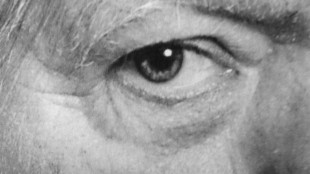
Reading
May 6 - I read the essay ‘Looking and Listening’ by Amanda Yates in the anthology James Benning, edited by Barbara Pichler and Claudia Slanar and published by FilmmuseumSynemaPublikationen, 2007: “…The idea for this essay came after one of these classes [‘Looking and Listening’ with James Benning] when I was sitting in the school cafe with James and musing about my observations. I told him that I thought his classes were his ‘real work’, and that his films were just documentations of this process. James laughed and thought about it for a while, then said: "Yeah, I think so too.” James work is about participation in the real world. In the case of ‘Looking and Listening’ the participation is direct, there is no intermediary. He compared his classes to painting. ‘The painting is just the repository of the actual artwork, which is the making of the painting. The only person who ever actually experiences the original artwork is the painter, while he is painting it.’ His class then is a collaborative project between James and his students. In essence we are the only ones who actually hear or see his work, and yet the work is as much ours as it is his. It can only be known personally, through our senses, our bodies, our narratives.“
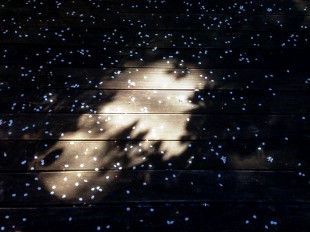
Cherry Tree
May 4 - Cherryblossomsnow.

Reading
April 30 - Peter Handke: Vor der Baumschattenwand nachts. Zeichen und Anflüge von der Peripherie 2007 - 2015. In an epigraph at the beginning of his new book of diary notes, the author quotes Johann Wolfgang v. Goethe: "Andere werden von wichtigen Dingen Nachricht geben; indessen ich in meinem beschränkten Kreise das Herkömmliche lebendig zu erhalten bemüht bin."

Cherry Tree
April 26 - Issa (1763 - 1828):
Under the cherry blossoms
None are
Utter strangers.
_515d31.jpg.jpg)
Surgery
April 18 - Rotator cuff repair: arthroscopic surgery in order to repair a torn tendon in my right shoulder. As part of the aftercare my right arm will be immobilzed by an arm sling, that looks like a small sofa hanging around my neck - for six weeks.
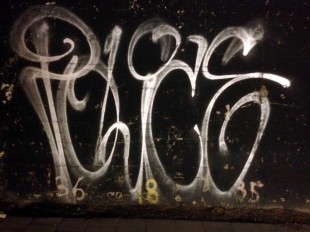
Düsseldorf
April 12 to 14 - Evaluation of the audiovisual works submitted by the applicants for the bachelor progams at the Institute For Music And Media. During an evening stroll I come across a new graffito at the entrance of the recently opened underground station Kirchplatz.
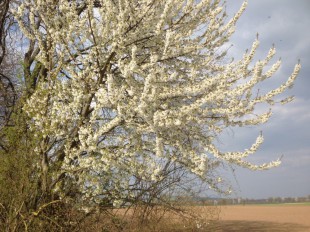
Spring
April 10 - Sunday Walk in the fields. Bright spring light, chilly wind.
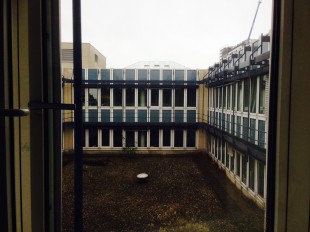
Teaching
April 05 - Start of the summer term at the Institut For Music And Media at Robert Schumann University of Music in Düsseldorf.
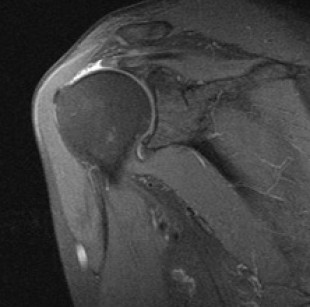
Injury
March 22 - The magnetic resonance imaging brings proof: rotator cuff tear in my right shoulder.
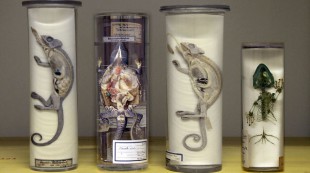
DVD
March 17 - James Benning’s latest film natural history (2014) comes in a 2 disc DVD set with a bilingual booklet. It is the 5th in a praiseworthy Benning edition published by the Austrian filmmuseum. The 77-minutes film is a portrait of Vienna’s Natural History Museum. In the accompanying essay Christian Koeberl, the director of the museum, writes: "Those familiar with James Benning’s work will probably be surprised by natural history. Benning made a name for himself with films that dealt with landscape; more specifically, with landscape over the course of time, ‘real’ time. The art of observation, of contemplating nature and events, is also the topic of the seminar ‘looking and listening’, which he has been teaching on his academic ‘home turf’, the Californa Institute of the Arts in Valencia, for many years. Particularly in recent years, Benning has increasingly experimented with the extreme notion of film as a representation of real time (as in 13 LAKES or Nightfall, 2012), although it is also possible for an alternative chronology to exist concurrently (like the changing of the seasons in Stemple Pass, 2012). This filmmaking practice may seem simple at first, perhaps even boring, but to the observant viewer it reveals many layers, all far from simple. The investigation of nature and the interaction of man, nature and technology (as in El Valley Centro, RR and Ruhr)is masterfully and thoroughly composed. the viewer is moved to engage with the images end events depicted, as well as with the history of landscapes (Deseret) or objects (Two Cabins), and to experience effects that go far beyond the fascinating imagery."

Exhibition
March 11 - "Im Traum der Träumer erwachen die Geträumten". Opening of a solo exhibition with works by Harald Klingelhöller at Konrad Fischer Galerie in Düsseldorf.
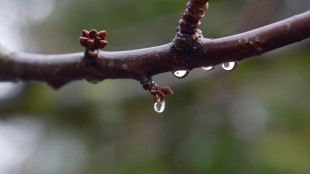
Cherry Tree
March 5 - last drops of winter
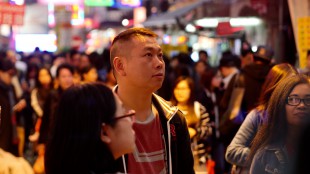
Hong Kong
February 28 - Stopover in Hong Kong on our way from Auckland to Frankfurt. Excursion to Mong Kok, one of the major shopping areas of the metropolis. With a population density of 130 000 people per square kilometer it is one of the crowdiest places on earth. A stark contrast to the place where we have just been: New Zealand’s South Island has a population density of 7 people per square kilometer.
_52b101.jpg.jpg)
Clevedon
February 25 - Before I wend my way home I see my old friend Mandy. Well, at least that was his name 45 years ago, when we hung out together on the banks of the Rhine River. Today people call him by his real name: Manfred Frank, a name well known amongst architects and building engineers. He lives on top of a hill outside of Auckland and spends a lot of his time thinking about opening and closing doors and windows. He works with top architects and designs heavy duty hinges for them. His joints are found in the most prestigious buildings of the world - for example in the glass dome of the German Parliament.

Auckland
February 10 - Karekare and Piha are two black sand beaches west of Auckland. It was here that Jane Campion shot the famous beach scenes for her Oscar winning The Piano. While I record long audio and video takes in the evening light for 24seascapes I listen - through the headphones - to the distant surf of the low tide. Jane Campion’s film ends with the beginning lines of the poem Silence by Thomas Hood: “There is a silence where hath been no sound. There is a silence where no sound may be in the cold grave under the deep deep sea”.
_d22ba3.jpeg.jpg)
Collingwood
February 7 - It’s a wrap! Bye-bye Paturau! The shooting for John Cousins & The University of the Waves is over. I hand a copy of the complete audio and video recordings to John. In Collingwood, at the other end of the gravel road, we say goodbye. He and Colleen drive south to Christchurch and I go north to Wellington and on to Auckland. In Collingwood I catch up with the rest of the world by connecting my computer to the WIFI hotspot at the Courthouse Cafe.
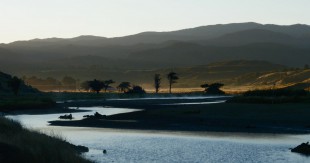
Paturau
February 1 - The alarm clock goes off at 5 am. The recording equipment is packed, the batteries are charged. Quietly I sneak out the house. Everyone else is still asleep. I feel like a hunter, trying to catch the early morning light.
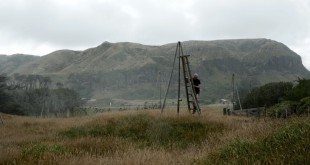
Paturau
January 28 - First shooting session at The Paturau Array, a meadow with five huge aeolian wind harps, that John built with the help of Coleen Anstey and local friends fifteen years ago. Thoroughly he cleans the four meter high tripod structures. He washes off dust and salt from the strings, cleans the bridges and cuts the grass around the heavy stones, that keep tension on the strings. As soon as he is finished with an instrument, it seems to respond by singing gentle aeolian drones.
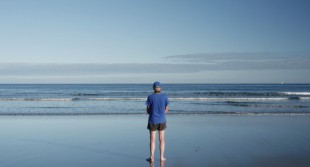
Paturau
January 23 - After a dusty ride along a thirty kilometer gravel road we arrive at the Paturau River Mouth, the main shooting location for our film. It is a remote spot on the West Coast of the South Island. No telephone no internet connection. To John and his partner Colleen this is a special place. They come here every summer, since more than thirty years. They use the extensive beaches on both sides of the river as their laboratory. In his field diaries, The University of the Waves, John talks about his perception in this wild environment:
“A thought today - something I tried to explain to Colleen this evening, not very successfully - occurred to me while sitting watching the sea during the heat of midday. I saw the coast solely as it is, a natural entity, water, land and climate, all working as part of an environment which I take absolutely for granted, with no aesthetic or philosophical overlay, just a ‚thing‘; and I felt a slight tremor at the back of my mind, a kind of shiver of recognition, saying that this was the real secret - that reality, what we perceive with our physical senses, is all there is, that there is nothing ‚below‘ or ‚beyond‘. I think it was a glimpse of what it must be like to truly let go of one’s own personal point of view of the world, and see it and yourself objectively, as something from which you are apart but to which you simultaneously belong. It was like really getting outside of myself or else getting fully inside of what I was seeing. It was not an aesthetic appreciation, more a sort of relaxing into a state of neutrality concerning it and me. Somehow letting go of my feelings about it and just acknowledging it as being there. Just a hint, like a fragile odour or an mirage, or some kind of ghost sound which leaves you wondering if you have heard it at all.”
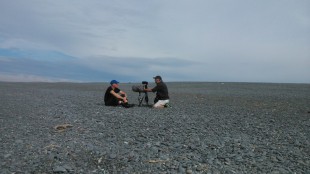
Birdlings Flat
January 21 - Birdlings Flat / take 2. After the gusty shooting at the end of October, John and I decide to go back to Birdlings Flat, a pebble beach an hour south of Christchurch. We repeat the interview. This time we are more lucky. The wind is calm and the surf in the background is comparatively soft and gentle. I take advantage of the good weather conditions and record a few long takes for 24 seascapes. The spatial extension of the sound of the breaking waves along the never-ending pepple beach is unique and very intriguing.

Christchurch
January 20 - Meeting with John Christoffels on the Campus of the University of Canterbury. He is the Programme Coordinator of the School of Fine Arts and teaches film in the department since 2002. Over and above he is a well known New Zealand cameraman. Eight years ago we worked together on PLACES_IN_TIME | lake > creek > ocean. We exchange notes on making films and teaching films to art and music students. And we consider the possiblities of an exchange programme between our institutions.
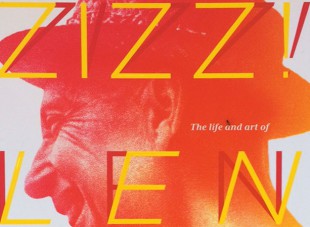
Reading
January 19 - In the University Bookstore in Dunedin I buy copies of zizz! The Life and art of Len Ley. “In this captivating book Lye’s biographer, Roger Horrocks, weaves the artist’s writings into a memoir of his fascinating life.” (Blurb) In the chapter about his time as teacher Len Lye is quoted:„I taught at New York University for three years as a ‚professor of kinetics‘ in their creativity programme...My advice to students went something like this: ’Right now you should be building your boat to go way out there to catch some big ones. As Jerry Rubin’s book title goes: ‚Do it!‘ Don’t talk about it, just in your own sweet slow sure maddened insidiously fanatical confident time-biding way do it! As for high standards that you feel too scared to try to achieve, balls to all that thinking - just get going on your own. Get to know your senses. Shape your own shoe, as you and only you know where it fits best...I allowed my students to develop their personal style of writing, to shape their own distinctive idiom. I encouraged them to untie mental shoelaces so their thoughts could go barefoot and trip the light fantastic.”
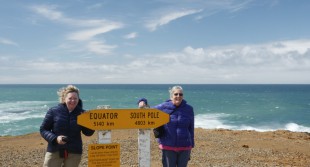
24seascapes
January 15 - Slope Point, the southernmost point of the South Island of New Zealand. There is no road. I walk 20 minutes through a meadow and along the cliff. It is very wind. I frame the shot so that the sign, that gives the distances to the Equator (5140 km) and to the South Pole (4803), is in the foreground. About halfway into the intended 4 minute take a couple of windblown American ladies enter the frame. Unaware of the recording they start talking to me. Can I take their picture? They are very cheerful and shout their story into the wind: they met 50 years ago when they shared a room in College and now they are on their anniversary tour. Thanks for the photo, bye bye! Cut! Thanks for the unwanted story!
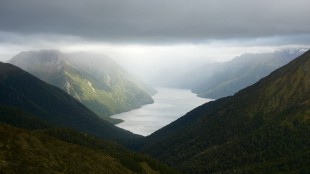
Walking
January 10 to 13 - Walking along the Kepler Track: 1st day from Te Anau to Luxmore Hut, 2nd day from Luxmore Hut to Iris Burn Hut, 3rd day from Iris Burn Hut to Moturau Hut, 4th day from Moturau Hut to Te Anau.
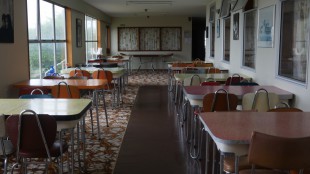
Hokitika
January 2 to 3 - An eerie location discovered by chance: the former Seaview Psychiatric Hospital in Hokitika. In the mid fifties it housed more than 500 patients, when it was closed in 2009 it was down to 22. Since the facility has been closed it has been used on numerous occasions by the New Zealand Military to stage urban warfare, search and rescue and public disorder exercises. At the time of my visit it’s used as an emergency accomodation for backpackers. The hall, the dormitories, the kitchen, the dining room, the bathrooms and the lounge - every room has still the original furniture, carpets, bookshelves. A lunatic asylum frozen in time. The video images , that I record, go very well with John’s piece Sleep Exposure.
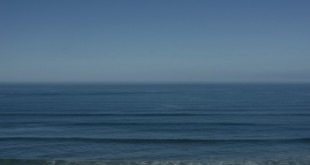
New Year Walk
January 1 - The sun of the first morning of the new year licks the dew from the big fern trees, mist rises off the hills. The light seems tangible. From the Cowshed Cafe near the Mokihinui River mouth we walk north along a dirt road to the maze of Gentle Annie Point. It was here, that eight years ago, I took 600 photos in 24 hours, documenting the light changes on December 24th 2007. 24 of the photographs I selected for PLACES_IN_TIME | Gentle Annie Point 071224. Today I take a couple of 5 minute video shots and a few audio takes. for PLACES_IN_TIME | 24seascapes.